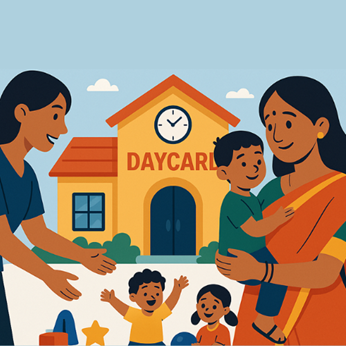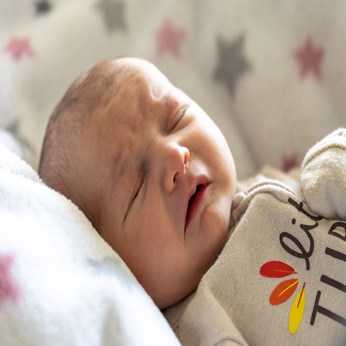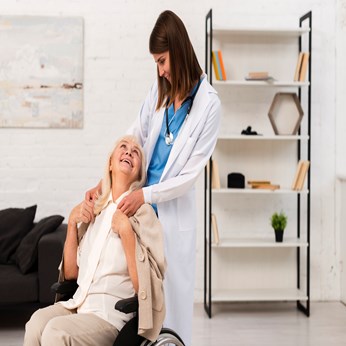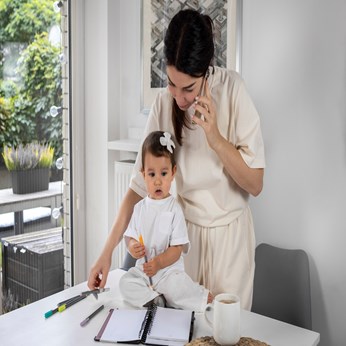How Is A Child Defined In Terms Of CPR/AED Care?

Understanding the nuanced approach to CPR and AED care for children is crucial for anyone involved in emergency medical response. Unlike adult care, pediatric emergency care requires specialized knowledge and techniques that can make a life-saving difference.
Age and Size Definitions in Pediatric Emergency Care
In medical emergency protocols, children are typically defined differently than in everyday contexts:
- Infants: Ages 0-1 year
- Children: Ages 1-8 years
- Adolescents: Ages 8-12 years (transition period)
These age ranges are critical because they directly impact CPR and AED techniques:
Infant CPR Specifics (0-1 year)
- Use two fingers for chest compressions
- Compression depth: Approximately 1.5 inches
- Compression rate: 30 compressions to 2 breaths
- Perform compressions with gentler force
- Use infant-specific AED pads or pediatric reduction systems
Child CPR Specifics (1-8 years)
- Use one or two hands for chest compressions
- Compression depth: About 2 inches
- Compression rate: 30 compressions to 2 breaths
- Slightly more force than infant CPR
- Use child-specific AED pads when available
Key Differences from Adult CPR
The primary distinctions in pediatric emergency care include:
- Compression Technique: More gentle, focused approach
- Breathing Methods: Different mouth-to-mouth/nose techniques
- AED Considerations: Special pediatric settings or pads
- Underlying Causes: Often different from adult cardiac events
Critical Considerations for Caregivers
When to Initiate CPR
- Unresponsiveness
- No breathing or abnormal breathing
- No pulse detected
- Sudden collapse
Special Precautions
- Always check scene safety first
- Call emergency services immediately
- Use pediatric-specific training techniques
- Remain calm and focused
Technology and Equipment
Modern AEDs often have:
- Child/pediatric mode settings
- Specialized pads for smaller bodies
- Visual and audio guidance
- Automatic adjustment for pediatric use
Training Recommendations
Parents, caregivers, and professionals should:
- Take certified CPR/AED courses
- Renew certification regularly
- Practice on pediatric mannequins
- Stay updated with latest medical guidelines
Psychological Preparedness
Performing CPR on a child can be emotionally challenging. Mental preparation and remaining calm are as crucial as technical skills.
Medical Community Insights
Healthcare professionals emphasize that early intervention is key. The first few minutes are critical in pediatric emergencies, and knowing the correct technique can significantly improve survival chances.
Things to Note:
Understanding how a child is defined in CPR and AED care goes beyond age—it's about specialized techniques, gentle approach, and rapid, confident response. Every second counts in a pediatric emergency.
Pro Tip: Always have emergency contact information readily available and know the location of nearest AED and emergency medical services.
Disclaimer: This blog provides general information and should not replace professional medical training or immediate professional medical advice.
Take the next step toward your goals
Share your requirement and find the best care providers in your area
-
Looking for a caretaker’s job? Build your profile and get in touch with families in your vicinity.
-
Discover nannies, babysitters, cooks, housekeepers, pet sitters, and elder care under one roof.
-
Get all the support you need to run a successful care center.
-
Search for appropriate centers near you depending on your needs.
Care Corner Insights: Blog Library

Deep Cleaning Your House: Room-by-Room Checklist for a Thorough Clean
A sparkling clean home isn’t just about looks—it’s about health, comfort, and peace of mind. Whether you’re prepping for a festival, hosting guests, or just tired of the clutter, a deep clean can transform your space. But where do you start? Here’s a

What are Senior Apartments? Experts Explain Independent Living for Older Adults
As we age, our needs and lifestyles evolve—but one thing remains constant: the desire for independence. Senior apartments are designed precisely with this in mind, offering older adults a living arrangement that balances freedom with comfort, safety,

Baby Sleep Problems: What is Sleep Regression and How to Handle It
If you’re a parent, you know that baby sleep is one of the greatest mysteries of life. One day your little one is snoozing like an angel, and the next day they’re suddenly waking up every hour, fussing, or refusing to nap. Before you panic, there’s a

Daycare Admissions in Cary, NC for New NRI Families: Documents, Health Records, and Start Dates
Moving to a new country is exciting but also comes with many responsibilities—especially when it comes to finding the right daycare for your little one. For new NRI (Non-Resident Indian) families settling in Cary, NC, understanding the daycare

Overnight Babysitters in Bellevue, WA for Business-Travelling NRI Parents: Safety & Policies
For many NRI parents living in Bellevue, WA, frequent business trips are a reality. While traveling, one of the biggest concerns is ensuring your children are safe, cared for, and emotionally supported during overnight stays. Overnight babysitters ca

Indian Home-Style Cooks in Queens, NY: Tiffin-Style Weekly Meal Prep from Your Kitchen
Queens, NY, is home to one of the most diverse food cultures in the country, and Indian cuisine holds a special place among families looking for authentic, comforting meals. While restaurant takeout is convenient, nothing compares to the taste and nu

Baby Sleep Problems: What is Sleep Regression and How to Handle It
If you’re a parent, you know that baby sleep is one of the greatest mysteries of life. One day your little one is snoozing like an angel, and the next day they’re suddenly waking up every hour, fussing, or refusing to nap. Before you panic, there’s a

What is Validation Therapy? A New Approach to Dementia Care
Caring for loved ones with dementia is one of the most emotionally challenging journeys a family can face. Traditional methods often focus on correcting memory lapses or redirecting confused thoughts—but that can sometimes lead to frustration, stress

What is a Part-Time Nanny and Do You Need One
Parenting is a beautiful journey, but let’s be honest—it can also be exhausting! Between work deadlines, household chores, and family responsibilities, sometimes there just aren’t enough hours in a day. That’s where part-time nannies step in, offerin

Part-Time Housekeeper Hiring in Alpharetta, GA: Weekly Schedules, Pricing, and Must-Do Tasks
Keeping a home spotless while balancing work, family, and personal commitments can be overwhelming. For families and professionals in Alpharetta, GA, hiring a part-time housekeeper is one of the most practical solutions. Whether you need help once a